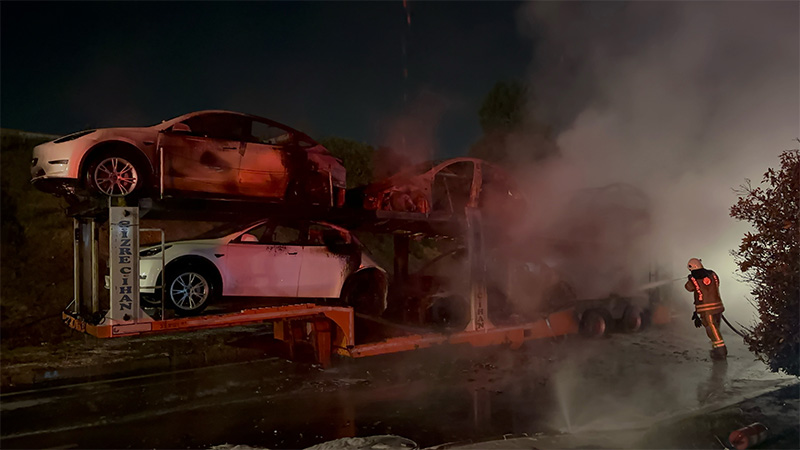EV fires on the rise.
Concerns are growing over exploding electric vehicles (EVs) in Australia, with fire and rescue services in the Land Down Under’s New South Wales (NSW) considering abandoning an EV car accident rescue if the electric car battery is likely to explode.
“They say the first responders need more training as if this can be solved with a certificate,” said Australian journalist Jo Nova. “But the dark truth is they’re talking about training the firemen and the truck drivers to recognize when they have to abandon the rescue.”
She referenced a story published in the EV blog The Driven that had touched on recent testimony given to the NSW Government’s Electric and Hybrid Vehicle Batteries Inquiry. The story’s author Jennifer Dudley-Nicholson suggested that first responders did not have adequate training to deal with EV collisions and, in the most serious cases, crews could be forced to abandon rescues.
One particular area of concern seemed to revolve around the need to extract a trapped casualty quickly after a crash by dragging the person out in a “very undesirable manner.” Fires are a grave risk in any vehicle accident, but they can be quickly brought under control in an internal combustion engine (ICE) vehicle, i.e. those powered by gas. (Related: Massive explosion at EV battery warehouse in Uzbekistan kills 15-year-old boy, injures 163.)
Worries about the potential dangers inherent in EVs are likely to grow as numbers on the roads continue to rise. EV battery explosions can occur very quickly, triggering the release of highly toxic gases. When they roar into thermal overdrive, they create very high temperatures and are very difficult to extinguish.
The explosion can occur after almost any collision, or be due to a fault in the initial manufacture. The fire often takes hours to control and it can reignited days after it was thought to be out.
EV fires on the rise
There is little doubt that EV fires are on the rise. In the U.K., occupational health and safety training provider CE Safety runs Freedom of Information checks on local fire brigades – and its latest survey shows an alarming rise in conflagrations.
There were 507 battery fires from several EV types reported in Greater London during the period between 2017 and 2022. However, CE Safety found a “gigantic” 219 conflagrations that occurred in the area from 2022 to 2023 alone.
Lancashire was said to rank second with 15 EV battery fires, but this was 10 more in a single year than recorded in the five years between 2017 and 2022. Overall “it was concerning” to discover that the number of electric battery fires during the period between 2022 and 2023 was higher in most areas than the data showed over five years from 2017 to 2022.
There was a substantial increase in the number of e-bikes catching fire, with CE Safety noting that lithium is highly flammable and reactive. “Over-charging presents a massive risk to households with lithium-powered vehicles,” the safety organization observed.
Concern is also rising over the transportation of EVs on car ferries. Recently, Havila Kystruten – which operates a fleet of car ferries around the coast of Norway – has banned the transportation of electric, hybrid and hydrogen vehicles. According to a report in the Maritime Executive, it is the latest step by the shipping industry, “which has become acutely aware of the increasing danger of transporting EV and other alternate fuel vessels.”
“A possible fire in electric, hybrid or hydrogen cars will require external rescue efforts and could put people on board and the ships at risk,” said Havila Kystruten’s managing director Bent Martini.
Watch Del Bigtree and Jefferey Jaxen discussing the real problems of exploding EVs and the subsequent fires that first responders can’t put out in this clip from “The HighWire with Del Bigtree.”
Desperate Deep State May Assassinate American Journalists, Jack Posobiec Warns


